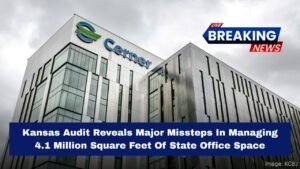The Kansas Department of Labor (KDOL) has successfully recovered $11 million in fraudulent unemployment claims that occurred during the height of the COVID-19 pandemic, according to agency officials.
While this accounts for only 2.4% of the estimated losses, efforts continue as the window for prosecution begins to close.
Massive Scale of Pandemic-Era Fraud
During the pandemic, Kansas processed roughly $460 million in fraudulent unemployment benefits, with about $292 million of those losses coming from state funds and $168 million from federal resources.
Although an earlier audit in 2021 estimated total losses at $700 million, that figure has since been revised downward by KDOL after further analysis.
Amber Shultz, Kansas Labor Secretary, described the situation as “an extremely stressful and unfortunate part” of the agency’s history. She emphasized the challenges of recovering funds, noting the department’s limited role in investigations.
Limits on KDOL’s Authority and Law Enforcement’s Role
Derek Helms, KDOL spokesperson, explained that the department can prepare and recommend cases for prosecution but lacks authority to carry out investigations directly. The burden of recovery largely rests with banks and law enforcement agencies, both local and federal.
“Once we submit the case, we step out of the process,” Helms noted.
Comparisons to Other States Raise Questions
At a recent Senate Committee on Government Efficiency meeting, Sen. Rick Billinger (R-Goodland) expressed concern over Kansas’ high fraud losses.
He compared it to Colorado, which reportedly experienced only $73 million in fraudulent payouts despite using a similar technology infrastructure.
“This just doesn’t add up,” Billinger said, criticizing the scale of Kansas’ losses as disproportionate.
Fraud Rings and Identity Theft Compounded Losses
Shultz reported that many fraudulent claims were traced to sophisticated international criminal networks, which exploited Kansas’ outdated 1970s-era unemployment system. These bad actors used identity theft and claim hijacking to collect payments.
Before the pandemic, unemployment fraud was rare in Kansas. However, the sudden surge in unemployment claims overwhelmed the system, opening the door to large-scale exploitation.
“Scammers quickly realized how easy and profitable it was,” Shultz said.
New System Brings Stability and Results
In November 2024, KDOL launched a modernized unemployment system, which has significantly improved performance. The new platform has:
- Reduced claims processing times
- Lowered call volumes
- Increased the number of successful online applications without staff assistance
According to Helms, unemployment fraud is now extremely rare, thanks to the new system’s added security and efficiency.
Federal Legislation May Extend Prosecution Window
As the five-year statute of limitations on pandemic fraud approaches, Kansas officials worry time is running out. The Pandemic Unemployment Fraud Enforcement Act, passed by the U.S. House in March 2025 (with full support from Kansas’ House delegation), seeks to extend this limit. However, the bill has stalled in the U.S. Senate.
Kansas has made progress in its fight against pandemic-era unemployment fraud, reclaiming $11 million of the estimated $460 million in false claims. While investigations are ongoing, the limitations in prosecutorial power and time remain significant hurdles.
With a new digital unemployment platform in place and federal legislation pending, state officials hope to strengthen safeguards and hold more offenders accountable.
The state’s recovery efforts serve as a lesson in how outdated systems and rapid crises can leave even well-managed departments vulnerable.




